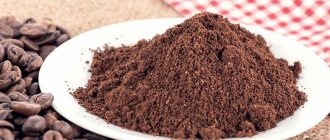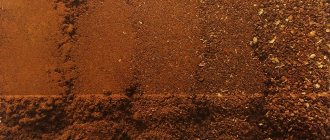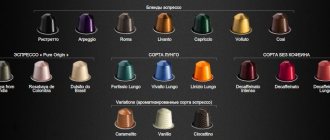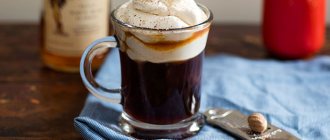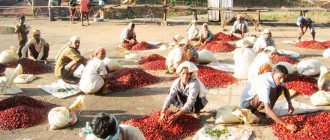Nowadays, there are many options for making coffee, which has become an integral part of the life of a modern person. One of the most popular and widespread recipes is cappuccino coffee. This is a tasty and healthy drink, since cappuccino contains natural milk.
Many people start their day with a cup of coffee in the morning in order to wake up and get a boost of energy. But sooner or later you get tired of drinking the same thing every day. In this case, it’s worth diluting your morning routine with a cup of aromatic, foamy cappuccino. This recipe has come to us since the distant sixteenth century, having undergone many changes and modifications.
At the moment, there are two main ways to prepare it: with your own hands or using a coffee machine.
Let's find out a little more about its preparation technologies and features.
Coffee varieties for cappuccino: classification
There are more than 70 species of coffee trees growing on the planet. But only 3 of them are used for preparing various drinks. These are Arabica, Liberica, Robusta. This method of product classification began to be used back in the 18th century.
Arabica coffee is considered the most valuable type of coffee. The product is famous for its taste and aroma qualities. Such trees grow in a number of countries located on different continents. To a large extent, it is the location that determines the taste characteristics of the fruit.
Arabica is extremely popular. This is an excellent variety of coffee for cappuccino, espresso, Americano and other drinks. But there is another factor that forms a high degree of its value. This is difficult to grow. The variety is capricious, susceptible to temperature changes, and afraid of pests and diseases. Therefore, prices for Arabica are always the highest.
In second place is Robusta. In comparison with Arabica, this variety loses in taste and aromatic qualities. But robusta has other advantages: this coffee is less finicky in terms of cultivation and surpasses the leader in strength. And although it is less demanded in industry as a percentage, it is successfully used for the preparation of soluble products.
How to choose the degree of roasting of coffee beans? Or just take the average one?
Coffee beans for a coffee machine can be of any roast: light, medium, dark - a matter of taste. In fact, there are more gradations:
Light roast : Scandinavian (200-210°C), American or City/City+ (City Roast, roasting temperature 210-215°C). Allows you to reveal the nuances of taste, as it preserves sourness as much as possible. It is not particularly popular in Russia, but in vain. There are herbal and sweet notes. Scandinavian roasting for espresso is, of course, worse. And in principle, light roasting in an espresso machine produces a lot of acid.
Medium roast : Full City (220°C), Full City plus (225°C). The most common, typical for espresso. I recommend starting testing with it. If you want more strength, bitterness, richness, move on to the next step. If you are looking for new facets of taste, try light roasting.
Dark roast : Viennese or Continental (230°C), French (240°C), Italian (245°C), Spanish (250°C). Bitter aroma with caramel notes, sourness disappears. As temperatures rise, the situation gets worse. This group mainly uses Viennese roasting (typically common in Italy). Spanish roast (aka Cuban) is charcoal. Italian - almost coals. The latter types of roasts are practically not found either in Spain, or in Italy, or in Cuba; take them simply as names. Even Viennese allows you to completely get rid of sourness and add noble burntness with a very long aftertaste. Dark roast coffee should be buttery and shiny. If this is not the case, then the roasting is old and you have crackers in front of you. But at the same time, pay attention to the price category, because “roasting bad grain half to death” is the best way to maximize its mediocre taste characteristics.
Roasting, like the type of coffee itself, is one of the most important factors when choosing beans to suit your taste and method of preparation. In general, dark roasting is not suitable for alternative brewing methods; light roasting is not suitable for espresso. This does not mean that such combinations cannot be used, it’s just that the result is not for everyone.
A striking example, let’s take a specific Cuban single-origin from TastyCoffee. As I wrote above, Cuban Arabica is one of the most non-acidic in the world. But Taystee roasts it according to his own statements, but I can judge the roast by eye along the line between light and medium. As a result, we have a bright acidity in espresso even on the most “bitter-prone” coffee machines, which are Delonghi machines. And the manufacturer correctly writes that they have this variety “for filter” - this is precisely because of the roasting.
Coffee blends
Mixing different types of ground product is a way to get coffee that is perfect in every way. This is how real masterpieces are created. One mixture is distinguished by its characteristic sourness, another by bitterness, and the third by aroma. In this method, you can enhance the tenderness of the product or deprive it of an undesirable taste, make it softer or more aromatic.
Professionals working in specialized stores are always ready to offer the buyer a variety of blends. A couple of examples. A blend of several Kenyan types of coffee together with Colombian ones is an excellent option for breakfast.
This mixture has an excellent tonic effect. But after lunch, it is better to give preference to notes of spiciness - a mixture of Costa Rican, Indonesian and Kenyan coffee.
Gourmets who know a lot about this matter often prepare coffee for cappuccino and other drinks themselves by mixing ground product of different varieties. So, in order to enhance the sweetness, you need to “combine” Haitian and Venezuelan products.
If you want to enjoy the wine flavor, it would be advisable to create a mixture of Ethiopian and Kenyan grains. The trio of Costa Rican, Brazilian and Colombian products is a perfect example of the smoothness of the resulting drink.
The color of the coffee can also be improved by blending. To do this, you need to create an ensemble from Venezuelan, Costa Rican and Guatemalan ground products.
Top manufacturing companies
TastyCoffee
The ranking of the best varieties of delicious coffee includes TastyCoffee. The company supplies single varieties, flavored varieties, and mixtures with berry and fruit flavors. Medium roast beans. Sold in packages of 250 g from 250 rubles.
Carraro
The top Italian coffee is Carraro. 100% Arabica, hand-sorted. Single varieties with chocolate and fruit flavors are produced. As well as a series of blends with varying degrees of roasting. 250 g sells for 235 rubles.
JuliusMeinl
An Australian company produces JuliusMeinl, a blend of Arabica and Robusta. This option is ideal for cappuccino. The result is a drink with lush foam and a sour aftertaste. The price starts from 360 rubles. for 250 g.
JardinDessertCup
100% Arabica dark roast. Suitable for any type of coffee machines. The brand will appeal to lovers of a fruity smell and a sweet aftertaste. Ground and grain options are sold. 250 g – from 260 rub.
LavazzaCaffeEspresso
The brand supplies the market with several coffee formulations. Medium roasted 100% Arabica beans. A standard package of 250 g costs 320 rubles. An ideal choice for lovers of strong Italian espresso.
L'OR
It is included in the ranking of high-quality French brands and is sold in more than 30 countries. The company produces cereals, instant drinks and capsules for coffee machines.
The choice of beans is small - two options for medium and intense roasting. L'OR has an orky taste with sourness. 230 g – 360 rub.
Hausbrandt
Included in the rating of elite varieties suitable for brewing in a coffee machine. Single varieties and mixtures with 80% robusta are sold. In a freshly brewed drink, you can feel notes of citrus, chocolate, and a nutty flavor. The company also produces blends with mild, sour and bitter tastes. 250 g – 390 rub.
Segafredo
The brand supplies the market with original mixes with rich taste. Blends and mixtures for espresso are presented. They make a drink with a chocolate, nutty, fruity, wine aftertaste. Varieties are sold in three degrees of roasting: from light to dark. Segafredo capsules are compatible with the branded Espresso coffee machine 1. 500 g – 520 rub.
Moscow coffee shop on shares
One of the leading Russian coffee producers. The company grows fruits on its own plantations in Colombia and the Dominican Republic. The brand is represented by blends of Arabica and Robusta. Medium roasted beans with chocolate and fruit tones retain softness and reveal a rich aroma. A drink with sourness without a bitter aftertaste. 100 g – 150 rub.
Pellini
The Italian brand produces premium quality coffee with a strong aroma and rich aftertaste. You can feel notes of vanilla, plum, chocolate, almond. Mixtures and blends are produced from several varieties of coffee. Robusta content from 20 to 80%. Decaffeinated Arabica is also available.
Each type of bean is fried separately in compliance with temperature conditions. Pellini does not add impurities or flavors. The cost of 250 g of ground grains is 600 rubles.
Paulig
The brand is mass market, sold in supermarkets in Moscow and other cities. Variants of all degrees of roasting are produced: from light to Spanish. The range includes blends with floral tones and slight bitterness. As well as monosort - a mixture of medium and dark roasted beans. Three types of grinding are presented. Including universal for all types of coffee machines. The cost is budget - from 90 rubles. for 75
Interesting! Which milk is better for cappuccino?
Illy
The Italian brand produces blends of 9 Arabica varieties in three types. They differ in the degree of roasting. The range includes decaffeinated beans and Americanos for those who like large volume drinks. There are also four single-origin varieties with caramel, honey and jasmine flavors. 250 g of grains in a tin costs 850 rubles.
Molinari
The drink of this Italian brand has a multifaceted taste due to the use of Robusta and Arabica beans from different countries. Single-origin Arabica beans, flavored varieties, decaf and bio-series are also produced - beans grown using environmentally friendly methods. There are 12 lines of coffee available for home coffee machines. 0.25 kg costs from 880 rubles.
Diemme
Premium Italian brand. Presented are grain blends and single-varietal Arabica beans from Africa, Brazil, and Ethiopia. Soft blends of lightly roasted beans and rich versions with 40% robusta content are produced. Cost 0.25 kg - from 790 rubles.
Jockey
The company purchases grains from America, Africa, and Asia. Each variety is roasted separately and then mixed into blends. Medium and high roast beans. For a coffee machine, we recommend buying beans. Because ground Jockey has fine and ultra-fine fractions. Budget price - 330 rubles. for 500 g.
Jacobs Monarch Classic
The company purchases Arabica and Robusta beans from Colombia, Asia, and Africa and produces a mixture. The classic version has medium roast beans. The taste is rich, bitter with sourness. Ground mixtures and T-discs for coffee machines are also available. Average price – 240 rubles. for 230 g.
BlasercofeLilla e Rose
The Swiss company produces blends of 7 varieties – 80% Arabica and 20% Robusta. Roast slightly darker than medium. BlasercofeLilla e Rose can be recommended to lovers of a drink with minimal bitterness and a pronounced sweet aftertaste. The aroma is floral and fruity. Cost 250 g – 710 rub.
Carte Noire
The company produces coffee from 100% Arabica beans. The beans used are from Asia, Colombia and Latin America. Medium-roasted beans have a slight bitter taste. Price for 230 g – 430 rub.
Lucaffe “Mr. Exclusive"
Premium Italian brand. Single varieties and mixtures containing robusta from 10 to 40% are produced. There are also decaffeinated Arabica options. The company keeps the recipes for some of its mixtures secret. The “gentle” roasting method is used. Therefore, the beans do not come into contact with hot surfaces during processing. Depending on the variety, the drink has a taste of cocoa, banana, or chocolate. 250 g costs from 740 rubles.
What factors shape the taste of cappuccino?
The ingredients of this milkshake are espresso, steamed milk and milk foam in equal proportions. First of all, any coffee for cappuccino must be brewed correctly. The grains need to be ground immediately before cooking. Otherwise, the taste will deteriorate and the drink will turn out less aromatic.
Advice. The aromatic qualities of grains that have been sitting for a long time can be restored. To do this, they should be placed in cold water for 10 minutes, then dried in the oven.
To make cappuccino aromatic and delicate, it is better to brew espresso from Arabica beans with the addition of a small amount of Robusta. Milk for the cocktail must be exclusively fresh, of natural origin, with a fat content of 3.5%. Powder cannot be used.
Adjusting the taste
Coffee machines are equipped with a function for selecting the amount of raw materials and the volume of water.
The more grains, the stronger the brewed drink.
If you add 5 g of raw materials, the coffee will taste sour.
Interesting! About the varieties of raf coffee
The taste is regulated by the degree of grinding. Small fractions will make a stronger drink
Beans fully develop their flavor at a temperature of 95 degrees. This parameter can also be adjusted on the coffee machine panel.
Next, let's talk about which brands are in the top and are the best for use in a coffee machine.
Some subtleties of preparing Cappuccino
Regardless of the type of coffee used for cappuccino, you can get a truly tasty product only if you follow the rules for preparing a cocktail. If there is no coffee machine in the house, a Turk will help out. First the espresso is brewed. In the next step, the milk is heated over low heat (without bringing to a boil) and whipped using a mixer or whisk.
If liqueur or rum is added to a cappuccino, the alcohol must be poured before placing the foam on the surface. All kinds of additives such as nuts, cinnamon or grated chocolate are carefully laid out on top of the foam.
Product preparation
To prepare a delicious drink, you need to choose the right coffee beans and prepare the coffee - this is an important step that you cannot do without.
How to grind?
You can grind the beans yourself using a coffee grinder or purchase ready-made ground coffee . Coffee shops and specialty stores often offer coffee bean grinding services.
In such places you can choose and purchase the desired variety, and also ask to immediately grind the grains, having previously specified the degree of grinding.
Despite the fact that the product is not stored for long, it has excellent taste, a pleasant aroma and retains its beneficial properties.
Attention! When using an electric coffee grinder at home, it will take 5-7 seconds to get the desired grind.
How to choose grind?
Finely ground beans are not suitable for a geyser-type coffee maker , as small coffee particles can get into the upper section of the device, ruining the appearance and taste of the prepared drink. For the optimal option, you need a coarse or medium grind .
The ideal grind is called “coarse espresso” - the crushed beans are smaller than for preparing a drink in a Turk, but slightly more than for brewing a drink in a French press.
What does the degree of grinding affect?
The degree of grinding affects two important points:
- Taste of the drink . Finely ground coffee prevents water from flowing freely through the filter, resulting in an overly bitter coffee. A coarsely ground drink, on the contrary, does not create an obstacle for the liquid . In this case, the water does not have time to absorb the color and characteristic aroma of the ground grains.
- Ease of use . Finely ground coffee beans can clog the filter of the device during the preparation process. The coffee maker will not stop working and will not deteriorate, but to obtain a drink, the device will have to be disassembled, thoroughly rinsed and the filter refilled.

